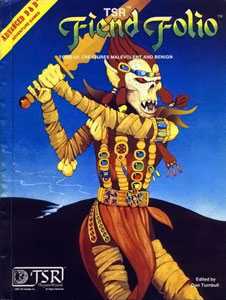Add 2nd Edition Deities And Demigods Pdf

From the article I linked to - the key words are highlighted 'As long as your own songs – which contain loops or sounds from Music Maker/ Music Maker Jam – are not used commercially, you can upload them to Soundcloud, Youtube or other portals' This means you can use your music creations as you will with the standard licence, providing you or 3rd parties are not: • making money directly or indirectly by selling the music, or through advertising attached to it • 3rd parties attaching advertising to your music - eg Youtube advertising - whether you are paid or not. Vita solo instruments seriale 3. • broadcasting on commercial / public radio, tv, internet radio / tv or other 'public broadcasting' eg music festivals, shop music, street music etc. This topic has been raised many times before and I feel you are reading too much into the Private licence statement on Catooh. • making money from other products or public broadcasting of those products, which contain music with the loops or sounds from the soundpools, eg music videos, films using the music for background audio, eg Wedding videos etc. If you meet or need any of the bullet points above, then commercial licences, as found on Catooh, come into play.
James Wyatt comments on the book's relationship to similar books from earlier editions: 'This book owes a lot to the 1st Edition Deities and Demigods/Legends and Lore book, more so than the 2nd Edition version. However, the new material we introduced meant that we had a lot less room to include the variety of pantheons included in the earlier. Sure cuts a lot 3 keygen mac.
794 19 GV1469.62.D84 W37 1984 Deities & Demigods (abbreviated DDG), alternatively known as Legends & Lore (abbreviated L&L or LL), ) is a reference book for the fantasy (D&D). The book provides descriptions and game statistics of and from various sources in and, and allows to incorporate aspects of and into their D&D.
The first Deities & Demigods was published in 1980 by while another book called Deities and Demigods was published in 2002 by, which acquired the D&D brand with their purchase of TSR in 1998. The original 1980 edition was the first print appearance of various fictional non-human deities, such as,,, and others, many of which have become standard features of the D&D game and its derivatives. These deities were the creation of. Later printings of Deities & Demigods, beginning in 1981, removed some material present in the 1980 printings. Publication date February 2002 Media type Print () Pages 224 For the third edition of Dungeons & Dragons, the name was changed back to Deities & Demigods and the cover artwork was changed again to bring it more in line with other third edition D&D manuals.
The interior material bears little resemblance to the previous printings of the book (first through sixth). Additionally, this edition presents only a few historical pantheons and in something of a vacuum, without any reference to or inclusion of their development in previous D&D sources, choosing instead to detail them as one-off campaign options. The third edition volume was written by,,. The cover illustration was by, with interior illustrations by,,,,,,,,,,,,,, and, with,, and Sam Wood.
James Wyatt comments on the book's relationship to similar books from earlier editions: 'This book owes a lot to the 1st Edition Deities and Demigods/ Legends and Lore book, more so than the 2nd Edition version. However, the new material we introduced meant that we had a lot less room to include the variety of pantheons included in the earlier version. So we chose the pantheons that we felt were (a) most popular and (b) most ensconced in the popular culture of fantasy: the Greek, Norse, and Egyptian. It stung a bit to leave out the Celtic deities, but we just didn't have the space.' 4th Edition Dungeons & Dragons [ ] Rather than a separate sourcebook, Deities & Demigods is the name of a semi-regular column in Dragon and Dungeon magazines.
Deities & Demigods articles in Dragon offers options for players and tips on roleplaying worshippers of a particular god, while articles in Dungeon offer backstory and monsters that DMs can use in a campaign. Starting with Dragon #380, the column was renamed Channel Divinity, though it continues to appear under its original name in Dungeon.
Artwork [ ] The artwork for the first several printings of this 'cyclopedia' was created by artists,,,,,,,,,. Each artist usually providing all the artwork for an entire pantheon. Erol Otus produced the cover artwork.

The most recent printings of the book contain illustrations from numerous artists and are more in line with the modern treatment of Dungeons & Dragons. These illustrations are in full color, as compared to the black and white art of the original. Legal history [ ] Deities & Demigods was one of many items named in a 1992 lawsuit between TSR and regarding the role-playing game and various rulebooks/sourcebooks designed for that game. One section of this lawsuit argued that 'The Plane of Shadow in MYTHUS (pages 190 and 402) and MYTHUS MAGICK (pages 21–22.) is derived from the Plane of Shadow in the AD&D DEITIES & DEMIGODS book (Appendix 1, page 129).' Reception [ ] Kevin Frey reviewed the supplement in No. He commented that 'If you like a wide variety of deities, this is for you.